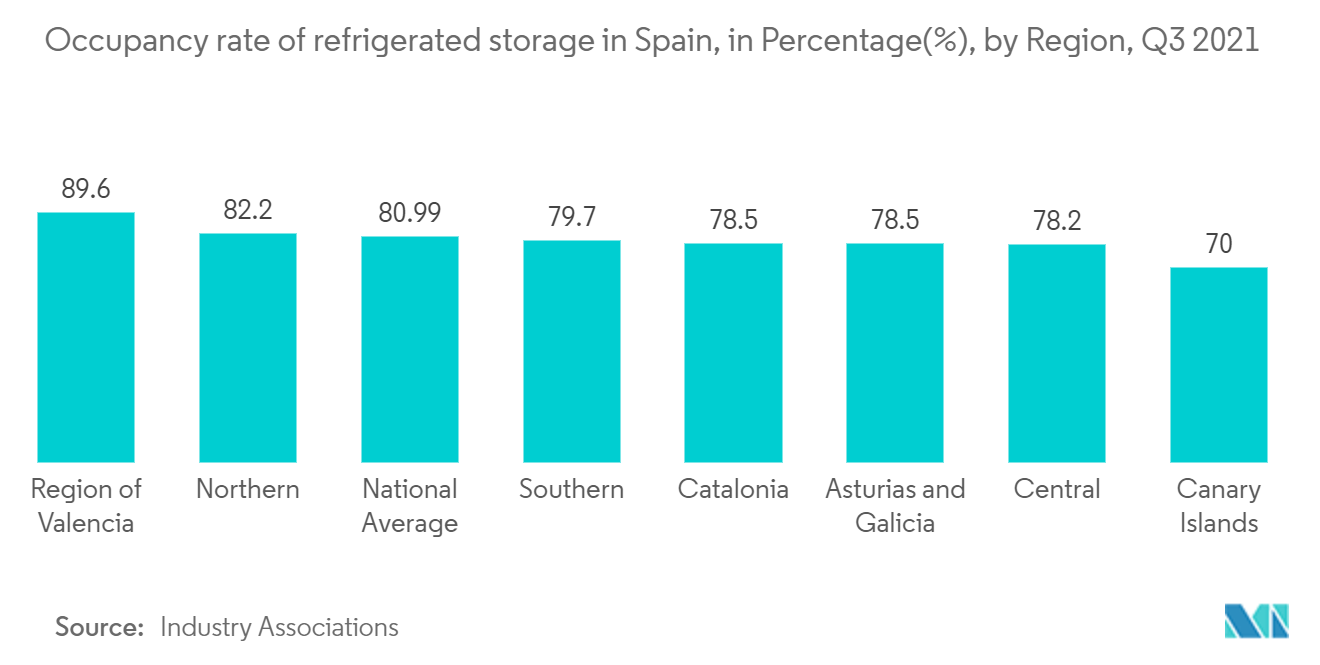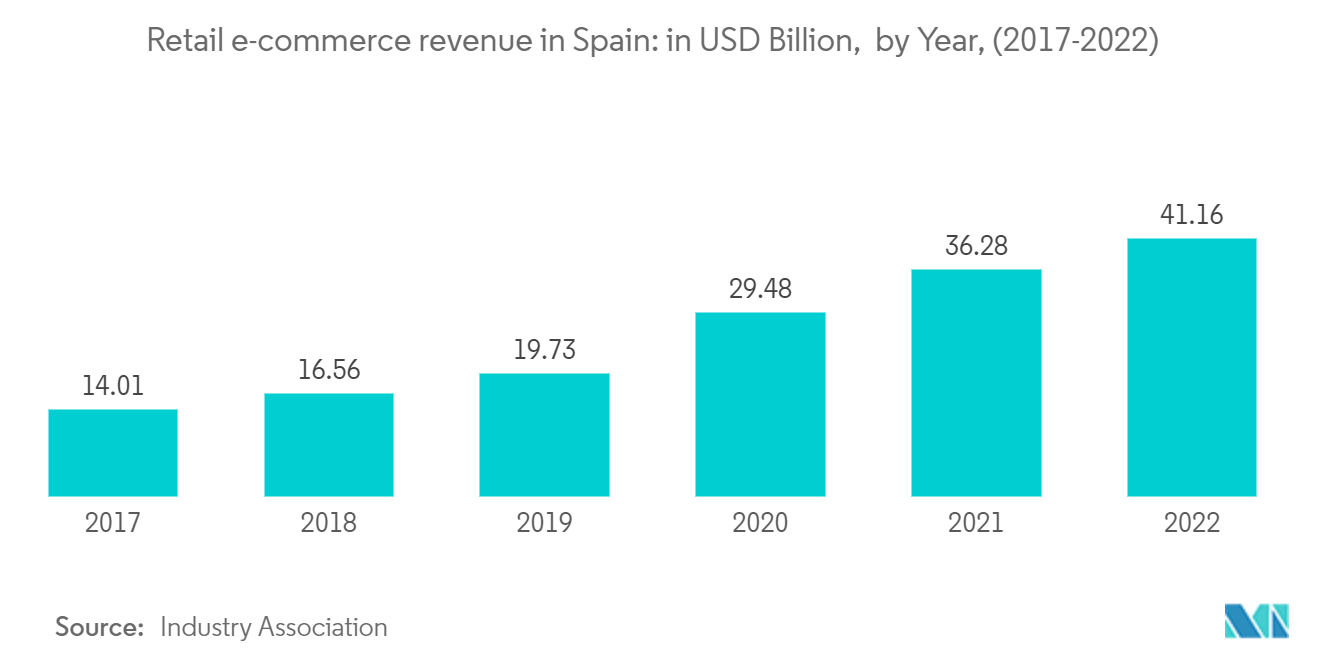Market Trends of Spain Cold Chain Logistics Industry
Increase in Cold Warehouse Demand Driving the Market
- As per the statistics from the previous years, it was widely reported that the self-storage market was thriving. It is currently trending at 4-5% year-on-year across Europe, and it varies from one country to the next. However, there is a high demand for self-storage trends in Spain.
- U-Store-it, a self-storage facility, states that the company's facilities are frequently booked. As a result, many customers rent online by pre-booking their units rather than waiting till the last moment. Despite market growth, Spain ranks fourth in Europe in terms of the number of units and storage companies. However, the needs frequently outnumber the availability when it comes to the Costa del Sol. Due to the rise in demand among consumers, U-store-it expanded its facility in Manilva, and a new Palmones facility was successfully launched during the last 12 months.
- Moreover, as technology improves, there will be more automation in the refrigerated warehouse. There will also be more hypermarkets and supermarkets in developing countries, driving the market during the forecast period. Furthermore, the increasing need for food safety and taste consistency, as well as the rising amount of agricultural and chemical products, are anticipated to boost market growth.

E-commerce Growth Driving the Market
- With over 26 million e-commerce customers, Spain is the European Union's fourth-largest e-commerce market, trailing Germany, France, and Italy. Spain records the highest percentage of online purchases from non-EU countries. According to the International Postal Corporation, China and the United Kingdom are the two leading countries in cross-border e-commerce sales in Spain. In the last five years, Chinese cross-border e-commerce vendors have gained ground, while UK vendors witnessed an erosion of market share.
- Spain is more than just a promising import market. According to the Chinese Ministry of Commerce, the country is also one of the top ten exporters to China regarding cross-border e-commerce. Food and cosmetics are two of the fastest-growing industries. China is pursuing a proactive policy to develop cross-border e-commerce through the implementation of facilitation measures. It recently expanded the List of Imported Retail Goods for Cross-Border E-Commerce (Positive List) and is establishing pilot zones for cross-border e-commerce. This strategy would benefit the Chinese demand for Spanish goods.
- The localization strategy goes beyond just locating fulfillment centers closer to end users. It is also about improving the overall experience of urban logistics. For example, AliExpress and Cainiao Network, Alibaba Group's logistics arm, collaborated with GLS Spain to provide a door-to-door order pickup and delivery solution for AliExpress sellers in mainland Spain. AliExpress was also anticipated to expand its automated locker network in France and Spain, with a target of 2,000 units and an increase in the number of cities covered. The company planned to maintain 170 lockers in Spain (Madrid and Barcelona) and 80 lockers in France. The localization effort can also be seen in Alibaba's increased recruitment in Europe, which includes personnel to develop end-to-end logistics solutions for cross-border e-retailers in the Spanish market.


